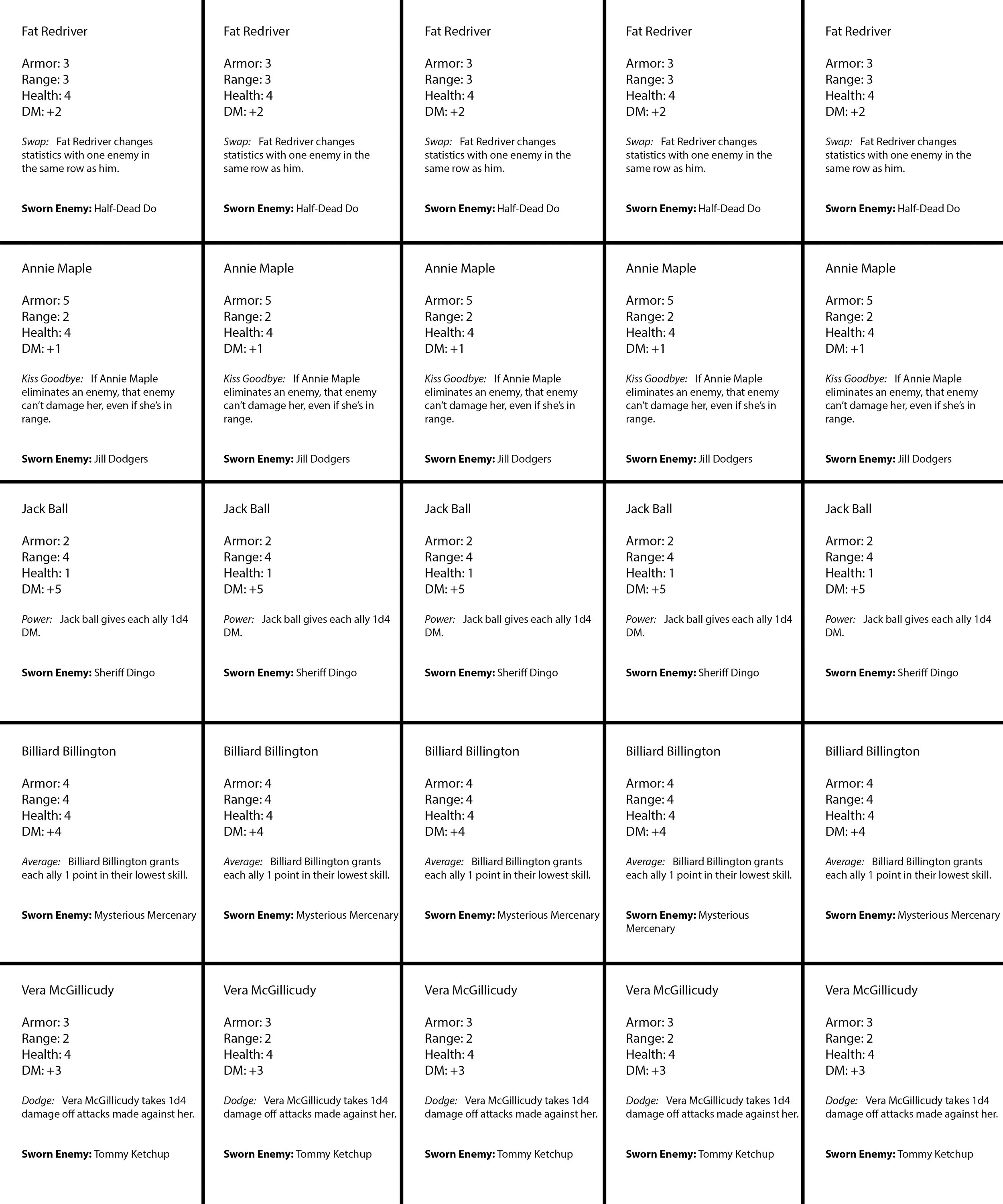



High Noon
High Noon is a board game that uses a d10 system and cards. Each player is given seven cards, and 1d10. The objective of the game is to win the most cards in 3 rounds of a Texas shootout, placing tile pieces on the board, and determining which cards will act as those pieces.
To win cards, a player must get a confirmed kill on an enemy card. If the player kills an enemy, the player adds the card to their victory pile. However, if they merely injure the enemy, the other player adds the card to their discard pile and draws new cards. Any card that isn’t injured during the shootout is added back into the player’s hand. A player can only have seven cards at a time. A player wins when they have 10 cards in their victory pile.
Stats: Armor (1-5), Health (1-5), Range (2-4 squares), Damage Modifier (1-5)
Setup
Each player is given three tokens and must draw 7 cards from the “Draw” deck. Erect the barrier on the black line in between both players and set a timer for 30 seconds. Both players must place down their tokens, as well the tokens corresponding cards, in order, from left to right. When the time runs up, remove the wall, and flip over your cards.
Placing Tokens
A token can be placed anywhere on the first two lines of blocks on a player’s side. Tokens cannot be placed on top of each other but can be placed in the same line both vertically and horizontally. Pieces that are placed on the line closest to the barrier go before pieces placed in the back.
Stats
Each card comes with a short array of statistics. These stats are armor, range, health, and damage modifier (DM).
- Armor absorbs damage before health damage is done.
- Range determines the number of blocks a card can reach.
- Health determines how much damage a card can take before dying.
- Damage Modifier (DM) is added to a card’s roll when determining damage.
Combat
When the time runs up, the combat initiative will go from left to right, starting on the youngest player’s side. The shooters closest to the wall go first, and their cards should align accordingly.
If a shooter is in range of an enemy, the player must roll a D10, and add their damage modifier to the results of the roll. If the number is higher than the enemy’s health and armor combined, the enemy is killed. If not, the enemy retains the damage until the end of the round. Mark down the taken damage on a piece of paper.
If a shooter kills an enemy, do not take the card before seeing if the enemy also kills the shooter. Only after both sides have analyzed their wins and losses may cards be exchanged.
If a shooter kills an enemy, and there is a second card behind it, remaining damage from the first attack proceeds to the second enemy.
If a shooter hits an enemy, but the enemy takes no health damage, that enemy card is added to the opposing player's “Victory Pile”. All other cards are added back into the players hand at the end of the round.



